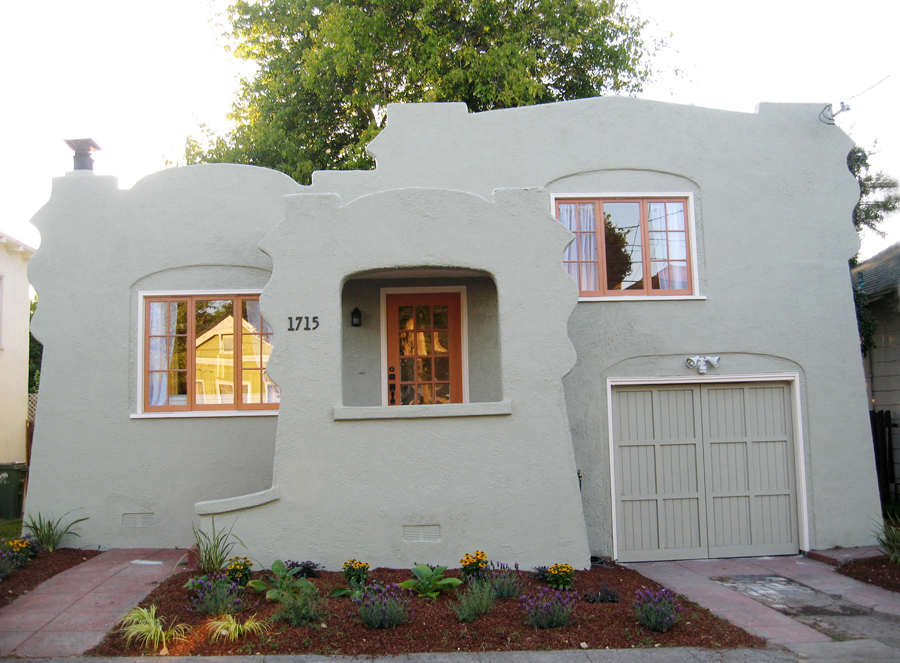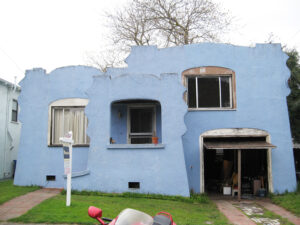
Respect: 1715 Schiller Street
Story by Jim Smallman
Award Recipient: Claudia Bowman, Owner
R-E-S-P-E-C-T… Aretha Franklin had it right, and so did Claudia Bowman, the restorer of 1715 Schiller Street. This charming 1925 vintage cottage has been restored inside and out with wonderful attention to detail, and respect for what it is. Equally important, she didn’t worry about what it isn’t, or try to camouflage it in some way, with siding or Permastone®. She didn’t lift it to put another floor underneath.
This cottage was designed originally as an affordable “starter” home, with two bedrooms and an inviting back-yard garden. When this house was listed as a “contractors special” a few years back, one observer dismissed the idea of restoring such a small house.
Fortunately, Claudia ignored that advice, and she’s created a gem. The house maintains its integrity and contributes generously to the street scene on Schiller. This is really nice work! The restoration acknowledged the old wisdom that some- times, “Less is more.”

Still, there were some serious challenges. After years of neglect, the house was in trouble. The roof had leaked for so long that the ceiling was falling in places. There was extensive dry rot. Electrical and plumbing systems were bad. But Claudia was brave and would not be deterred.
The exterior was changed back to its original appearance, with wooden windows replacing inappropriate aluminum windows that had invaded, probably in the sixties. The garage door now blends with the house and simple landscaping adds to the setting.
The entry area was marred by falling plaster caused by the leaking roof. After repairing the ceiling and its supporting framing, a lovely color scheme converted the entry to a welcoming space.
The dining room had the remnants of a built-in china cabinet, but it was missing its glass doors and one drawer. Instead of sheet rocking over the space—as a less sensitive person might have done—this restorer had glass doors and a new drawer custom made, and the original china cabinet lives again. It is a focal point of a newly elegant dining room. Refinished floors were the final touch.
The kitchen windows had suffered from neglect as well, and they were replaced. One wall, covered with v-groove 1960s-era paneling, was restored to its original plaster look. Electrical and plumbing upgrades improved the utility, and a new counter top, an appropriate light fixture and a modish paint design improved the looks. The flooring, covered with multiple layers of linoleum, was rescued and refinished, creating a fresh and appealing appearance.
In short, while there was serious restoration needed on this house, the work was done in such a way that the integrity of the house was maintained—or should one say, recovered. Money was spent on essentials, and not wasted on fruitless attempts to camouflage the house. When a restoration like this is done, and the result is so natural, so logical, so “right”, people sometimes say, “Well, of course!! What else would anyone do?” Unfortunately, there are other visions. There are other examples on the street, examples of what the Old House Journal calls “remuddling”. The irony is that “remuddling” just adds unnecessary cost, because the essentials still have to be done.
